Graeme Greene book "The New Big 5" - a photo book of endangered species - 2023
"From the towering giraffe to the bright orange and blue rock agama to the deep-sea anglerfish that produces its own light, we live alongside creatures that are a match for anything science fiction writers have imagined to populate alien worlds," writes Graeme Green in his book The New Big 5, published this month. In April 2020, the wildlife photographer launched a project to flip the idea of the "Big 5" of trophy hunting on its head, inviting people around the world to vote online for their five favourite animals to photograph and see in photos; the New Big 5 of wildlife photography, as decided by the public vote, are the elephant, polar bear, lion, gorilla, and tiger.
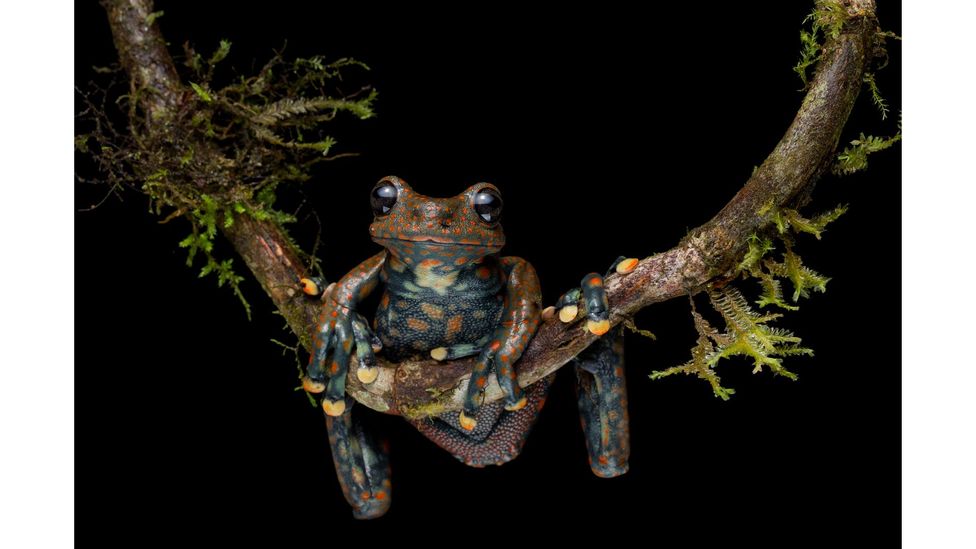
Spotted torrent frog, Santa Barbara Park, Ecuador, Lucas Bustamante; International Union for Conservation of Nature (IUCN) status: Critically Endangered (Credit: Lucas Bustamante)
The original term referred to five African animals that were considered the most desirable trophies, and the most dangerous animals to hunt: elephant, rhino, buffalo, lion and leopard. But, as Green writes, "it was interesting to realise how many people had heard and used the original Big 5 term without knowing what it meant. Many had assumed it stood for Africa's biggest animals, forgetting animals such as giraffes and hippos, both of which are larger than leopards or lions. Others thought it meant the most dangerous or lethal, forgetting animals like hippos (which kill more than double the number of people each year than are killed by lions), crocodiles, snakes, scorpions, or mosquitos."
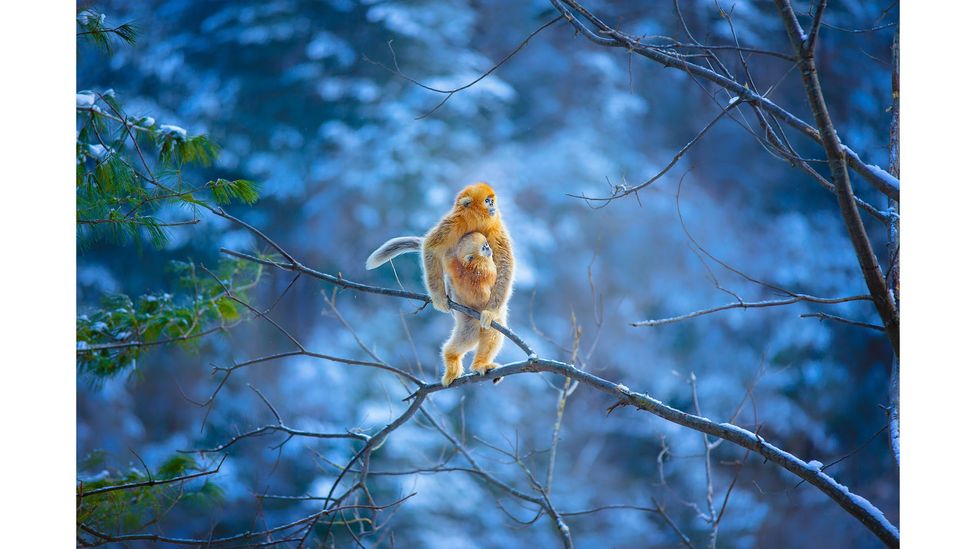
Golden snub-nosed monkey, Foping National Nature Reserve, China by Qiang Zhang; IUCN status: Endangered (Credit: Qiang Zhang)
"The Big 5 isn't the only term connected to Africa's violent past," continues Green. "Safari is a Swahili word, meaning 'journey', from the Arabic safar. Used by Arab traders in Africa, the word safari was adopted in the 1800s by white hunters, mainly from Britain and other parts of Europe, to describe their hunting expeditions, or hunting safaris, where they'd shoot animals, such as lions and elephants, for trophies. That creates a strange state of affairs today, with many wildlife lovers paying to take safaris (a word rooted in the hunting that wiped out millions of wild animals across Africa) to see the Big 5 (the list of animals most prized by trophy hunters)."
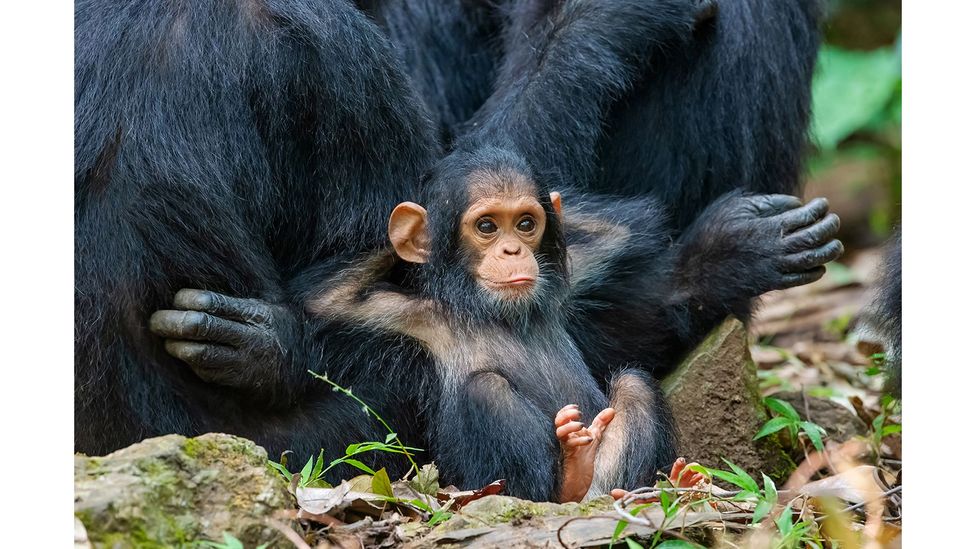
Chimpanzee, Gombe Stream National Park, Tanzania by Thomas D Mangelsen; IUCN status: Endangered (Credit: Thomas D Mangelsen)
The new book brings together 146 of the world's greatest wildlife photographers, conservationists, and advocates – including Dr Jane Goodall, the British primatologist who has spent more than 60 years studying chimpanzees. Her afterword is called Hope in Dark Times.
"People often ask me if I really do have hope for the future," she writes. "I believe we have a window of time during which we can start to heal some of the harm we have inflicted and slow down the heating of the planet. But only if we get together and take action now."
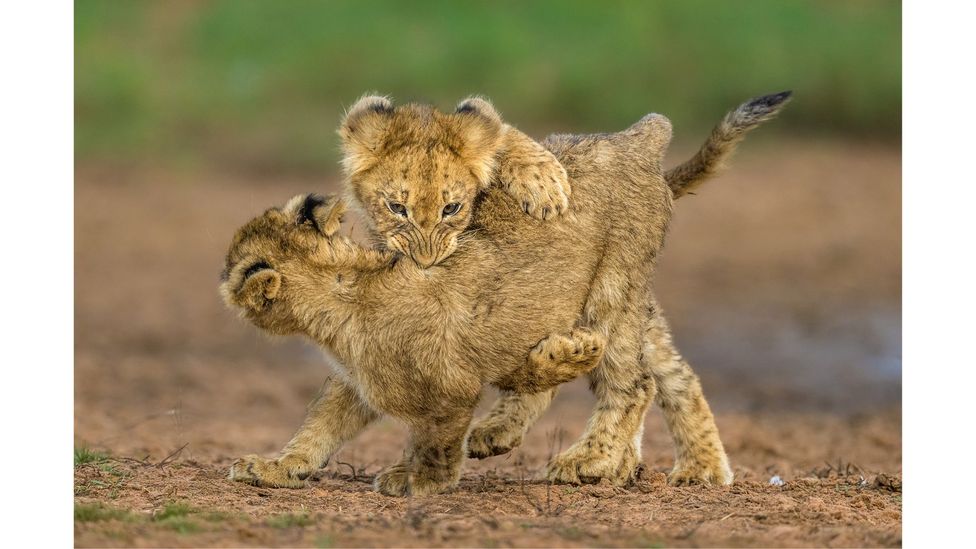
African lion, Tswalu Kalahari Reserve, South Africa by Marcus Westberg; IUCN status: Vulnerable (Credit: Marcus Westberg)
Photos have the power to create connections between humans and animals they might never have encountered otherwise, writes Dr Goodall. "I've never seen a polar bear or a tiger in the wild, but I've seen so many images, such as a mother relaxing as her cubs play around her, or two young play-wrestling males standing upright, or a tiger moving silently through the forest. This is why photographs are so important. For many people, it's only through such images that they can develop a deep respect and love for animals in the wild, as they haven't had the opportunity to spend time with them."
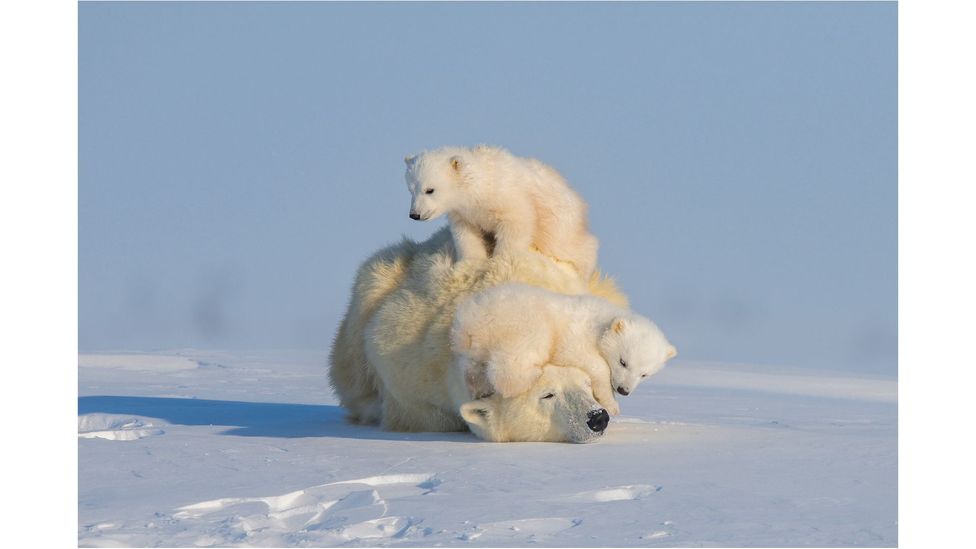
Polar bear, Wapusk National Park, Manitoba, Canada by Hao Jiang; IUCN status: Vulnerable (Credit: Hao Jiang)
Polar bear
"A polar bear's life is tied to the sea ice," writes Krista Wright, the executive director of Polar Bear International, in The New Big 5. "Sea ice is to the ocean what soil is to a forest. It forms the base of the Arctic food chain. Tiny channels in the ice filter light, creating an environment where algae grows, which feeds what some of our friends in the science community like to call the 'little squiggly creatures'. These in turn feed the fish, which feed the blubber-rich seals and whales, which feed the polar bears… Trying to picture an Arctic that is ice-free is like trying to picture a rain forest without trees or an ocean without water."
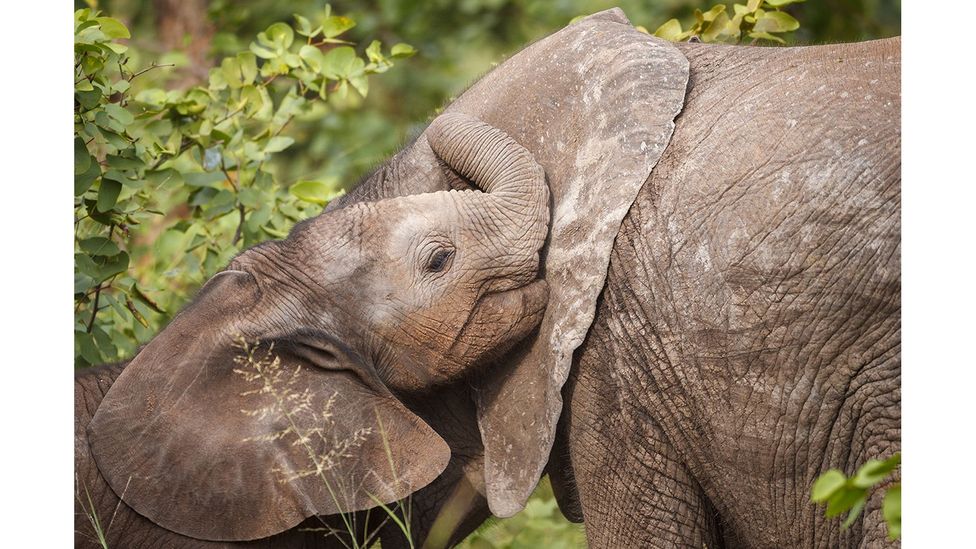
African Elephant, Kruger National Park, South Africa by Berndt Weissenbacher; IUCN status: Endangered (Credit: Berndt Weissenbacher)
Elephant
"With around 40,000 muscles (more than there are in the human body), their trunks are powerful enough to tear branches from trees, but dexterous enough to pick a seed up from the ground… The elephants we see today are the result of minute changes that occurred over the equivalent of 750,000 human lifetimes," writes Green. The evolutionary biologist Professor Richard Dawkins told him: "Elephants are the product of about 60 million years of evolution. It's incredible. Their trunk is an astonishingly clever, sensitive instrument. Early elephants would've been smaller, with no trunk or a small trunk, like a tapir. The trunk would've lengthened gradually over time. The tusks are also remarkable. Tusks started out as incisor teeth and grew out gradually."
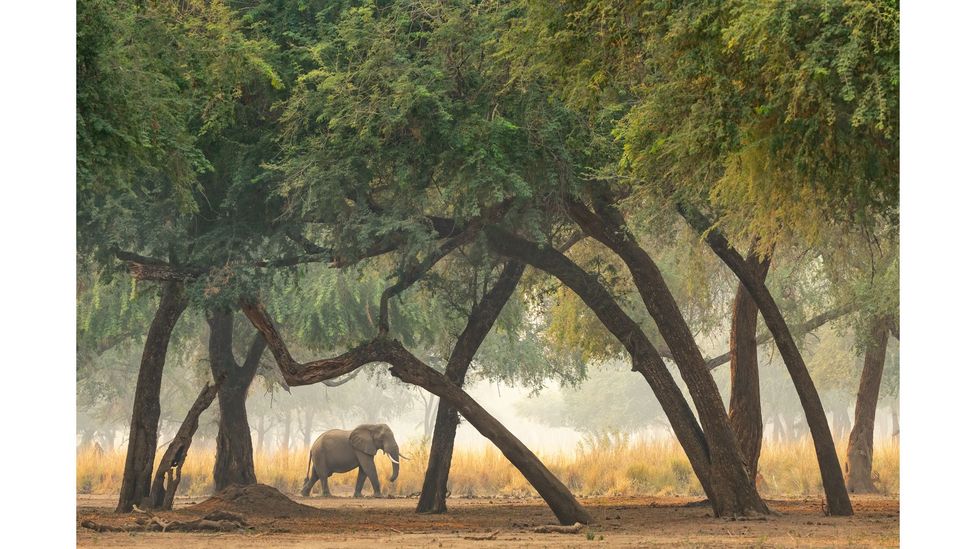
African elephant, Lower Zambezi National Park, Zambia, by Marsel van Oosten; IUCN status, Endangered (Credit: Marsel van Oosten)
The number of African elephants once reached upward of 30 million. Today, only around 400,000 remain. According to Professor Dawkins: "Every time a species goes extinct, especially something like an elephant, you're wiping out tens of millions of years of evolutionary research and development in the blink of an eye."
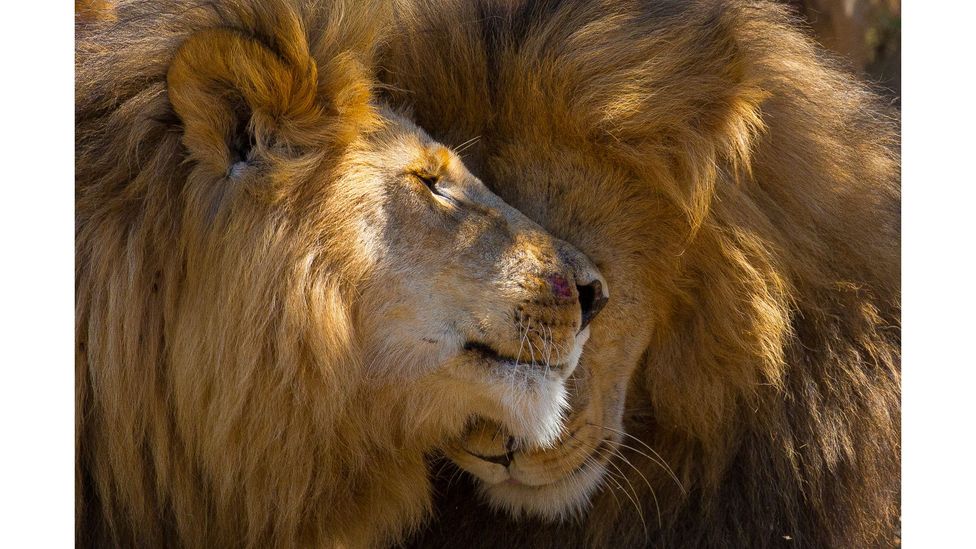
African lions, Naboisho Conservancy, Kenya by Graeme Green; IUCN status: Vulnerable (Credit: Graeme Green)
Lion
"There are fewer than 20,000 lions remaining in the wild," writes Dr Moreangels Mbizah, the founder and executive director of Wildlife Conservation Action, in The New Big 5. "In Africa, they currently inhabit less than 8% of their former range. Although lions also previously existed in many other countries, outside of Africa, lions can only be found today in the wild in one location: Gir National Park in India."
Threats include shrinking habitats, a decline in prey because of illegal bushmeat poaching and an increase in human-wildlife conflict – but there are solutions, writes Dr Mbizah: "The communities that live with the lions are the ones best positioned to help lions the most." Local people should be at the forefront of tackling the problem, she argues. "In the past, conservation has just been about protecting wildlife species and habitats, and very little concern was given to the people that live around these areas. Conservation should be about both nature and people and should aim to reduce the costs local communities face from living with and protecting wildlife, as well as increasing the benefits. If local communities don't have a direct connection or benefit from protecting lions, they have no reason to want to do so."
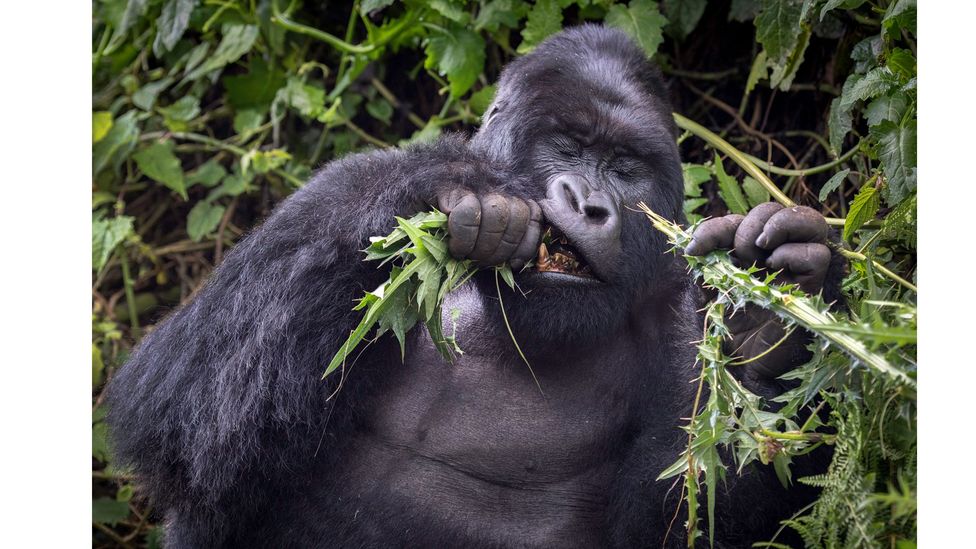
Mountain Gorilla, Volcanoes National Park, Rwanda by Mark Edward Harris; IUCN status: Endangered (Credit: Mark Edward Harris)
Gorilla
"Gorillas have long fascinated us because we see ourselves in them," writes Dr Tara Stoinski, president, CEO, and chief scientific officer of the Dian Fossey Gorilla Fund, in The New Big 5. "When you spend time with them, you can't help but see so much of our behaviour reflected back. Like us, they have friends and enemies. They form relationships that last for decades and risk their lives defending their families… When a silverback called Titus died in 2009 in Rwanda's Volcanoes National Park, his family stayed beside his body, grieving, trying to rouse him for three full days. I mourned along with them, as I do every time we lose a gorilla."
Despite their at-risk status, there is some hope – Dr Stoinski highlights how, due to the work of Dian Fossey and other campaigners, Rwanda's mountain gorilla population has increased from a low of 250 in the 1980s to an estimated 600 individuals today.
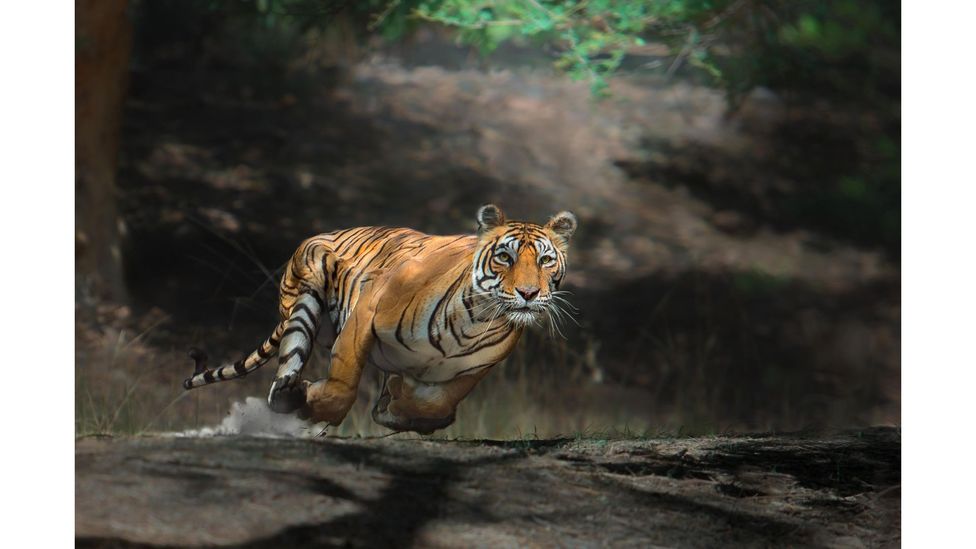
Bengal tiger, Bandhavgarh National Park, India by Thomas Vijayan; IUCN status: Endangered (Credit: Thomas Vijayan)
Tiger
"I've had countless fascinating interactions with tigers in Indian jungles over the last 30 years," writes Dr Anish Andheria, president and CEO of the Wildlife Conservation Trust, in The New Big 5. "Each incident is vividly etched in my mind." Dr Andheria points to the success of the Indian conservation programme Project Tiger, which in the early 1970s "achieved the impossible: aligning the government and local communities in a battle to bring a large carnivore back from the brink". Between 2006 and 2018, the tiger population in India doubled from just over 1,400 to nearly 3,000.
Sadly, the story in other nations with tiger populations hasn't been as positive – of the 13 countries where tigers were once present, three now have none, while two others have few left. In the remaining countries, tigers often number fewer than 1000.
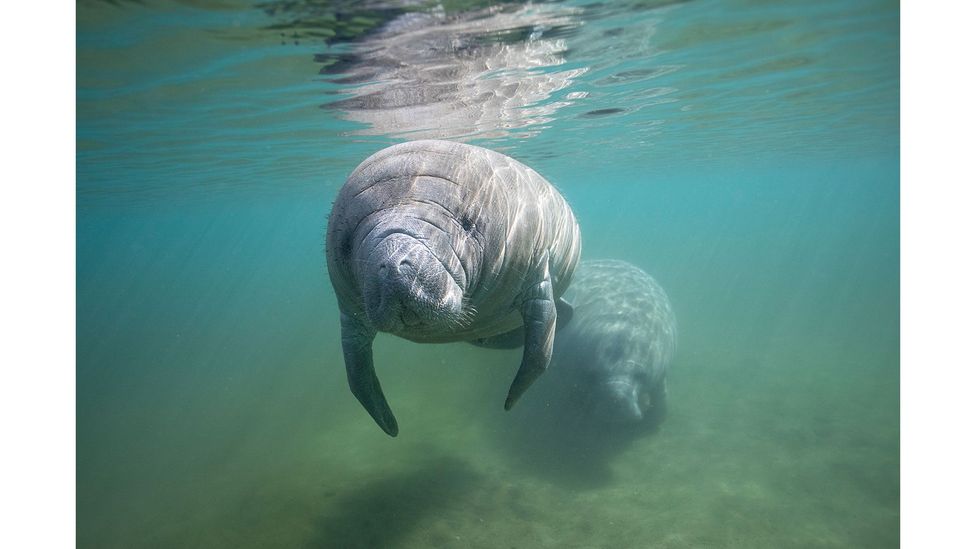
Florida Manatees, Florida, United States by Gabby Salazar; IUCN status: Vulnerable (Credit: Gabby Salazar)
Despite the urgency of the crisis, there are reasons for hope. Green recalls how in recent decades, two communities whose stories he covered as a journalist – in the Peruvian Amazon and in Chile's Aysén region – successfully fought off plans by energy companies to construct dams that would have flooded hundreds of square miles of land, displacing people and wildlife.
As Green writes in The New Big 5, "Commercial whaling wiped out 2 million whales in the 19th and 20th Centuries, but, since whaling was banned in 1986, humpback whale populations have recovered in the South Atlantic ocean from just 440 in the 1950s to 25,000 today. West African giraffes plummeted to near-extinction, just 49 left, before Niger's government and communities rallied. They're now standing tall at around 600. Siberian tigers, Jamaican rock iguanas, Checkered skipper butterflies, Nassau groupers, sea otters, and Hula painted frogs are among the many other species saved from extinction by people taking action."
The photos in the book help to reinforce the connection between humans and all wildlife. "Every creature deserves to exist," writes Green. "From bees to blue whales, from tigers to termites, all wildlife is essential to the balance of nature, to healthy ecosystems, and to the future of life on our planet."
The New Big 5: A Global Photography Project For Endangered Wildlife by Graeme Green is out now (Earth Aware Editions), with a foreword by Paula Kahumbu and an afterword by Jane Goodall.




Recent comments